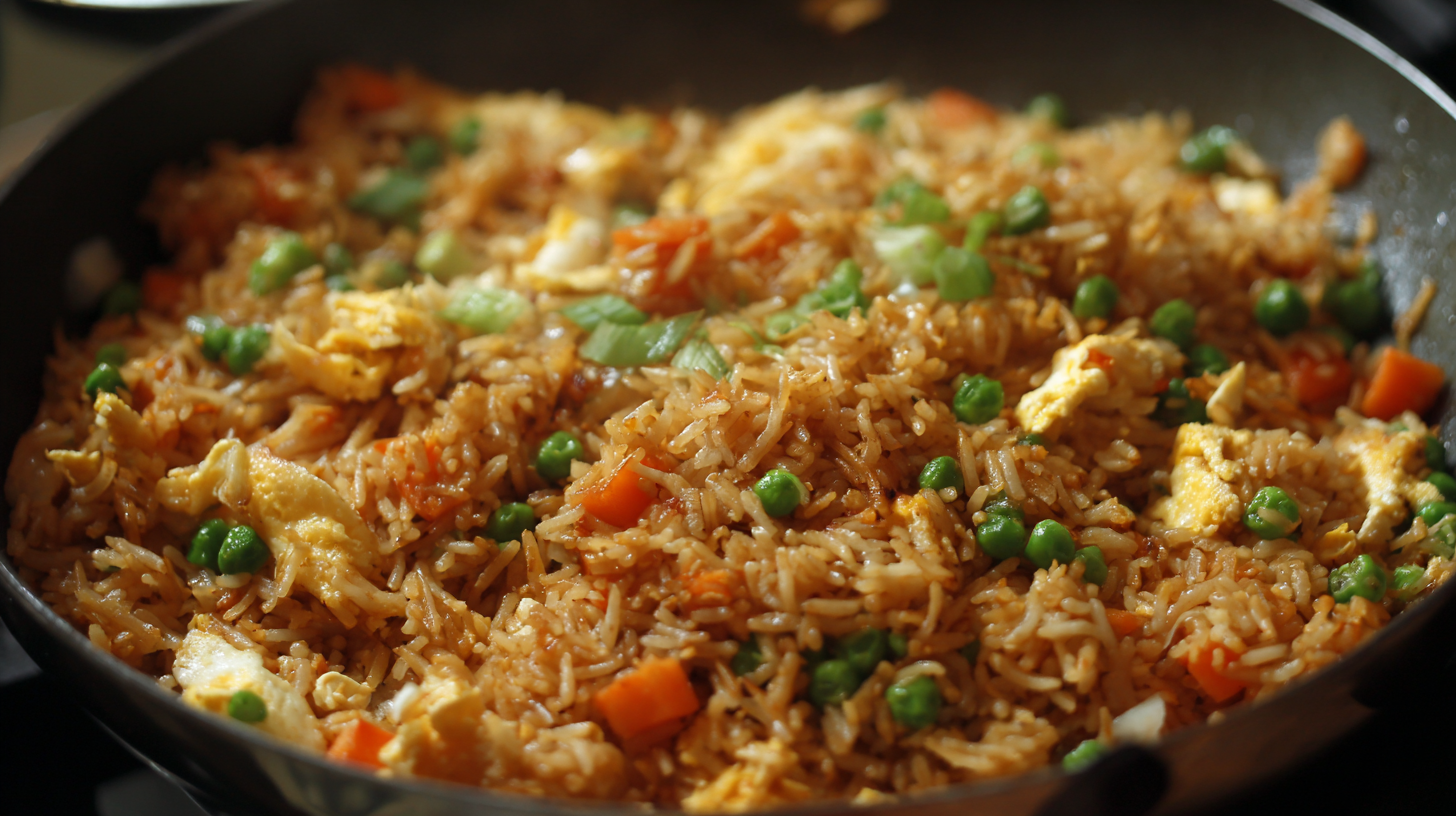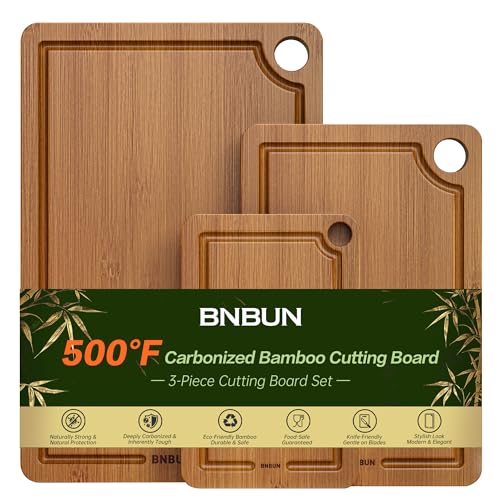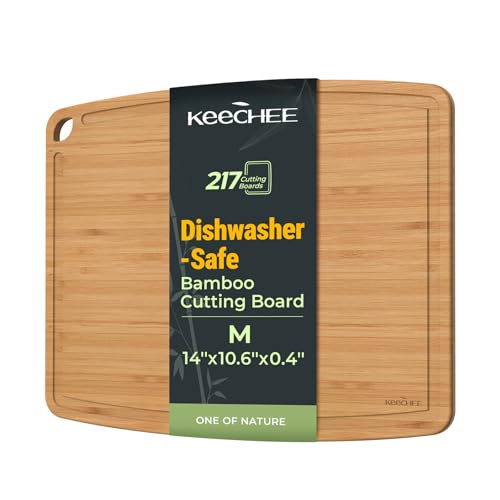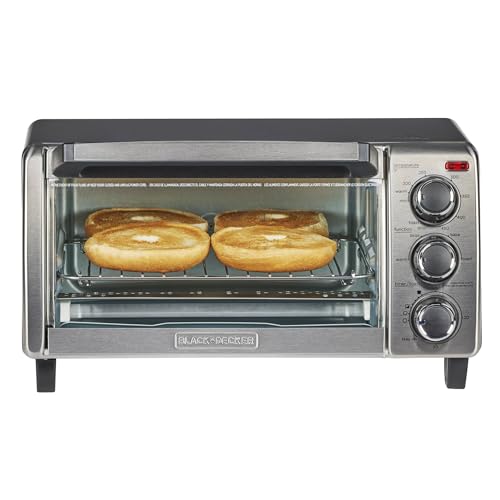Perfect Fried Rice Recipe
This homemade fried rice recipe delivers restaurant-quality results in just 15 minutes with simple ingredients you likely have on hand. Follow these steps to transform your leftover rice into a delicious meal that rivals your favorite takeout.
Ingredients
- 3 cups cold cooked rice (preferably day-old)
- 2 tablespoons vegetable oil or sesame oil
- 2 eggs lightly beaten
- 1 medium onion diced
- 2 cloves garlic minced
- 1 cup frozen peas and carrots thawed
- 2-3 tablespoons soy sauce
- 1 tablespoon oyster sauce (optional)
- 1 teaspoon toasted sesame oil
- 3 green onions thinly sliced
- Salt and pepper to taste
Step-by-Step Instructions
- Prepare your rice base: Break apart any clumps in your cold rice using your fingers or a fork. Cold rice works best because it’s drier and less sticky than fresh rice.
- Heat your wok or large skillet: Place a wok or large skillet over high heat and add 1 tablespoon of oil. Once the oil is shimmering hot spread it around the cooking surface.
- Cook the eggs: Pour in the beaten eggs and scramble quickly until just set about 30 seconds. Transfer to a plate and set aside.
- Sauté the aromatics: Add the remaining tablespoon of oil to the pan. Add diced onion and cook for 1-2 minutes until translucent. Add minced garlic and stir for 30 seconds until fragrant.
- Add vegetables: Toss in the peas and carrots and stir-fry for 1-2 minutes until heated through.
- Incorporate the rice: Add the cold rice to the pan breaking up any remaining clumps. Stir-fry for 2-3 minutes until the rice is heated through and begins to crisp slightly around the edges.
- Season the dish: Drizzle soy sauce and oyster sauce (if using) evenly over the rice. Add toasted sesame oil for extra flavor. Toss everything together until the rice is evenly coated and golden brown.
- Combine everything: Return the scrambled eggs to the pan and break them into smaller pieces as you mix them with the rice.
- Finish and serve: Toss in the sliced green onions reserving some for garnish. Season with salt and pepper to taste. Serve immediately while hot.
Customization Options
- Proteins: Add diced chicken pork beef shrimp or tofu (cook these before adding rice)
- Vegetables: Include bell peppers mushrooms bean sprouts broccoli or corn
- Flavor boosters: Try adding ginger sriracha fish sauce or a dash of rice vinegar
- Garnishes: Sprinkle with sesame seeds cilantro or crushed peanuts
Tips for Perfect Fried Rice
- Use a wok or large skillet that allows plenty of room to toss ingredients
- Maintain high heat throughout the cooking process for authentic “wok hei” flavor
- Prep all ingredients before you start cooking as the process moves quickly
- Don’t overcrowd the pan with too many ingredients at once
- If using fresh rice spread it on a baking sheet and refrigerate for 1-2 hours to dry it out
Why You’ll Love This Fried Rice
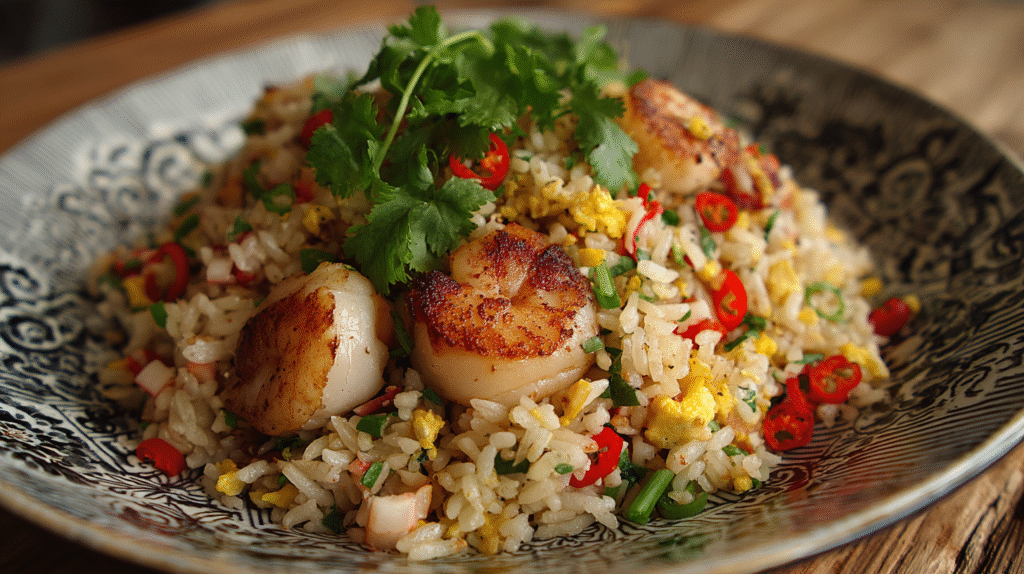
This homemade fried rice recipe will quickly become your go-to meal for several compelling reasons:
- Ready in just 15 minutes – Perfect for busy weeknights when you need dinner on the table fast
- Incredibly versatile – Customize with whatever proteins and vegetables you have on hand
- Budget-friendly – Transform leftover rice and ingredients into a complete meal
- One-pan wonder – Minimal cleanup means less time in the kitchen
- Restaurant quality – Achieve that authentic wok hei flavor right in your own kitchen
The simplicity of this dish belies its incredible flavor profile. Your taste buds will delight in the perfect balance of savory soy sauce, aromatic garlic, and the subtle sweetness from vegetables. Each forkful delivers a satisfying combination of textures from the fluffy rice, tender vegetables, and your choice of protein.
Kids absolutely devour this dish, making it a family-friendly option that eliminates mealtime battles. You’ll appreciate how this recipe helps reduce food waste by utilizing leftover rice and whatever vegetables might be lingering in your refrigerator.
The cooking process itself is oddly satisfying—watching plain rice transform into a vibrant, aromatic dish as you toss ingredients in a sizzling pan provides immediate gratification. Master this basic technique and you’ll unlock endless meal possibilities that can be adapted to any dietary preference or restriction.
Key Ingredients
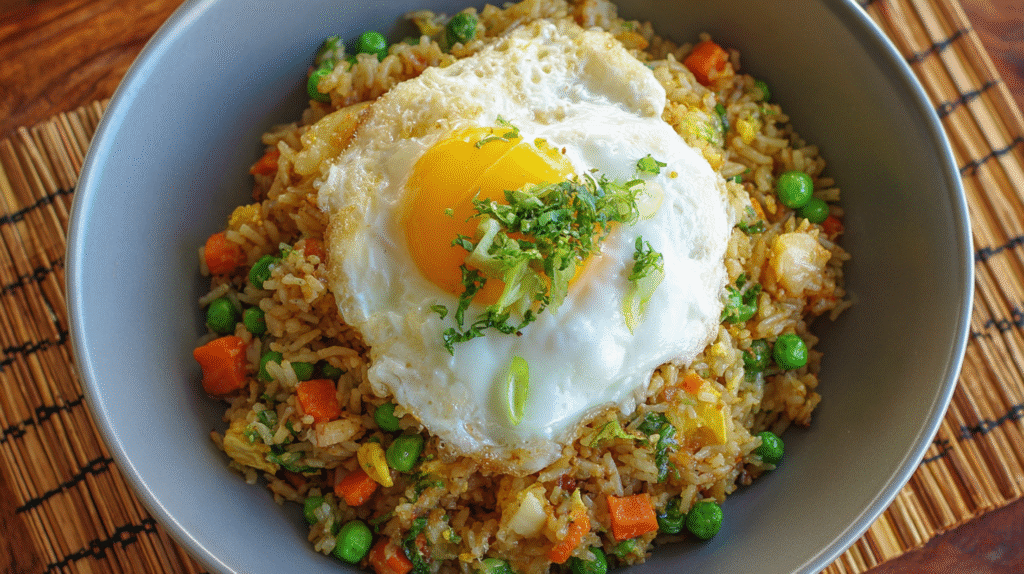
Creating perfect fried rice depends on having the right ingredients on hand. Here’s everything you need to transform simple rice into a flavor-packed dish that rivals your favorite takeout.
Rice
Cold leftover rice forms the foundation of exceptional fried rice. Day-old long-grain white rice works best because it has dried out slightly making it less likely to clump or become mushy during stir-frying. Short-grain varieties like jasmine or basmati also produce excellent results with their distinct aromatic qualities. You can use freshly cooked rice in a pinch but spread it on a baking sheet and refrigerate for at least 30 minutes to remove excess moisture. The ideal rice-to-ingredient ratio is about 3 cups of cooked rice for a standard recipe serving 4 people.
Proteins
Proteins add substance and savory depth to your fried rice. Eggs serve as the classic protein foundation—beaten and scrambled directly in your wok before combining with other ingredients. Consider adding diced chicken breast cooked until just done or thinly sliced beef marinated briefly in soy sauce. Shrimp needs only a quick 2-minute cook time while maintaining its tender texture. For vegetarian options try firm tofu cut into small cubes and pan-fried until crispy on the outside. Chinese barbecue pork (char siu) or leftover rotisserie chicken make convenient pre-cooked protein additions that require minimal preparation.
Vegetables
Vegetables provide color nutrition and textural contrast in fried rice. The classic combination includes frozen peas and carrots which require no chopping and cook quickly from frozen. Fresh vegetables like bell peppers snap peas or green beans cut into small uniform pieces maintain their crispness when stir-fried briefly. Bean sprouts add refreshing crunch when tossed in during the final minute of cooking. Corn kernels introduce natural sweetness balancing the savory elements. Aim for approximately 1½ cups of vegetables total for a balanced dish that doesn’t overwhelm the rice.
Aromatics
Aromatics create the fragrant foundation that elevates fried rice from bland to crave-worthy. Fresh garlic minced or pressed releases its essential oils when heated in oil providing unmistakable depth. Ginger grated or finely minced adds warm spicy notes that complement the other ingredients. Green onions serve dual purposes—the white parts cook with the aromatics while the green tops garnish the finished dish. White or yellow onions diced small and cooked until translucent contribute sweetness. For authentic Chinese fried rice consider adding a small amount of minced lemongrass or a dash of five-spice powder for complex aromatic notes.
Seasonings and Sauces
The right seasonings transform simple ingredients into restaurant-quality fried rice. Soy sauce provides the primary savory flavor base—use light soy sauce for salt and color without overwhelming other ingredients. Sesame oil added at the end of cooking contributes nutty aromatic notes that instantly signal authentic Asian flavors. Oyster sauce adds complex umami richness while fish sauce brings depth even in small amounts. White pepper offers subtle heat that permeates the dish without visual evidence like black pepper would. For customized flavor profiles try adding hoisin sauce for sweetness chili garlic sauce for heat or a splash of rice vinegar for brightness. Remember that rice absorbs flavors readily so start with smaller amounts of seasonings and adjust to taste.
Equipment Needed
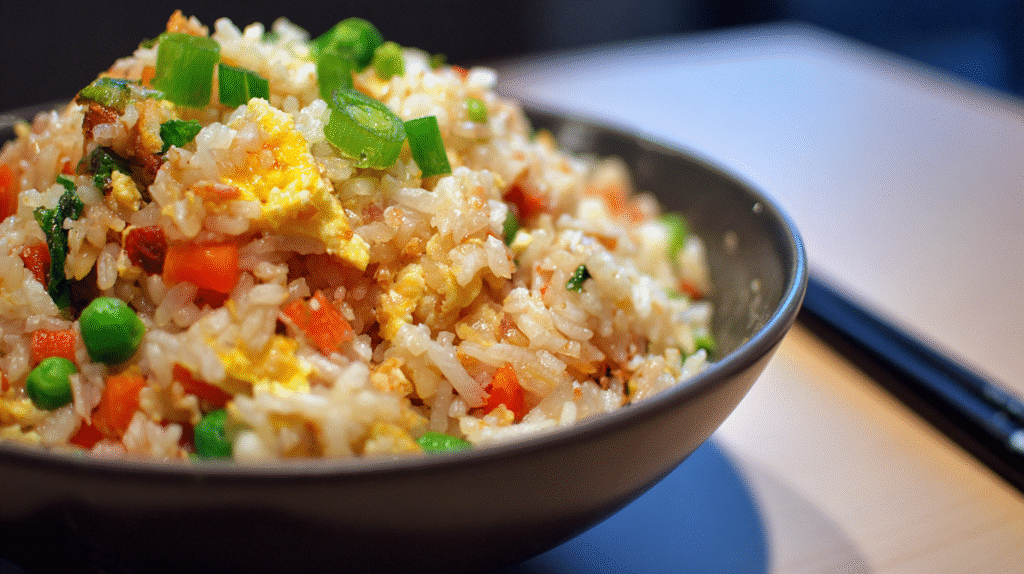
To make perfect fried rice at home you’ll need the right tools to ensure quick cooking and proper heat distribution. Here’s what you should have on hand:
- Wok or large skillet – A 12-14 inch carbon steel wok is ideal for creating restaurant-quality fried rice due to its high sides and heat retention properties. If you don’t own a wok a large non-stick or cast iron skillet works well too.
- Wooden spoon or wok spatula – These heat-resistant utensils won’t scratch your cooking surface while allowing you to toss ingredients quickly.
- Sharp knife – You’ll need this for chopping vegetables proteins and aromatics into uniform pieces that cook evenly.
- Cutting board – A sturdy board provides ample space for prepping all your ingredients before cooking begins.
- Small bowls – Having several prep bowls helps organize your pre-measured ingredients for efficient cooking once the heat is on.
- Measuring spoons and cups – These ensure you add the right amount of seasonings and sauces for balanced flavor.
- Fine mesh strainer – Useful for rinsing rice before cooking or draining any excess moisture from vegetables.
- Rice cooker or pot with lid – For preparing fresh rice if you don’t have leftover rice available.
- Garlic press (optional) – Speeds up the process of mincing garlic for more efficient prep time.
The beauty of fried rice lies in its simplicity – you don’t need specialized equipment beyond these basic kitchen tools. Your wok or large skillet serves as the centerpiece for this dish allowing ingredients to cook quickly at high heat while providing enough space to toss everything together without spilling.
How to Prepare the Rice
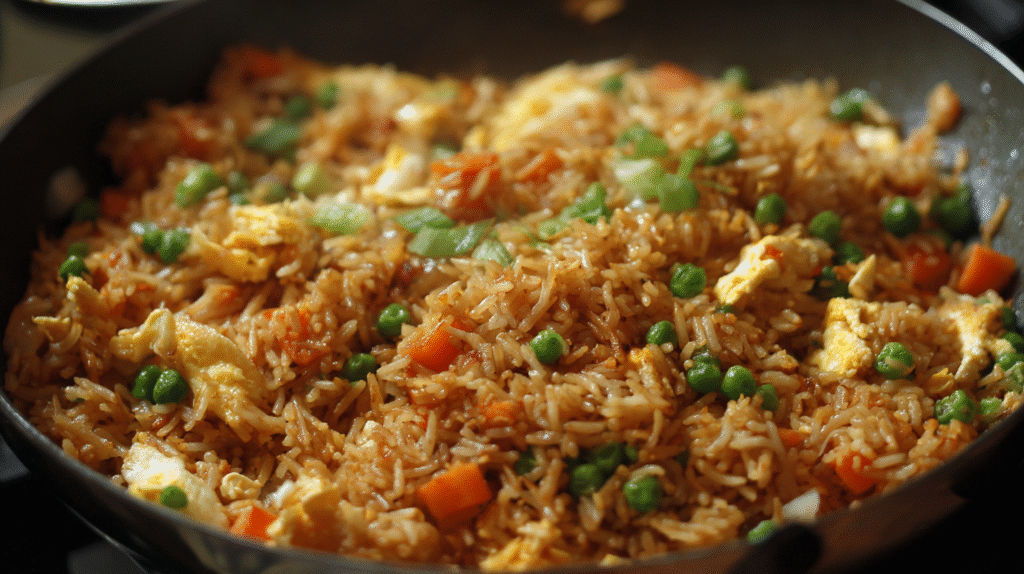
Properly prepared rice forms the foundation of exceptional fried rice. The texture and moisture content of your rice significantly impact the final dish’s quality.
Cooking Fresh Rice
When making fried rice with freshly cooked rice, you’ll need to adjust your cooking method slightly. Rinse the rice thoroughly under cold water until the water runs clear to remove excess starch. Use slightly less water than you normally would—about 1¾ cups water per cup of long-grain rice instead of the standard 2:1 ratio. This produces drier grains that won’t clump together when stir-fried.
Cook the rice according to package instructions, then spread it in a thin layer on a baking sheet. Allow it to cool completely at room temperature for 30 minutes. For faster cooling, place the baking sheet in the refrigerator for 15-20 minutes. The goal is to allow moisture to evaporate, creating rice that will separate easily during the stir-frying process.
Fresh rice works best when you reduce its moisture content before frying. To achieve this quickly, you can place the cooked rice in the refrigerator uncovered for at least 1 hour. Pat any visible moisture with paper towels before using it in your fried rice recipe.
Using Leftover Rice
Leftover rice actually makes superior fried rice because it has had time to dry out naturally. Day-old rice stored in the refrigerator develops the perfect texture—firm, separate grains that won’t turn mushy when stir-fried. The cold temperature causes the starch in the rice to crystallize, helping each grain maintain its structure during high-heat cooking.
Remove leftover rice from the refrigerator about 15 minutes before cooking to take off the chill. Break up any large clumps with your fingers or a fork. This step ensures even heating and prevents cold spots in your finished dish.
For leftover rice that has been refrigerated for more than a day, consider refreshing it by sprinkling 1-2 tablespoons of water over the rice and covering it with a damp paper towel. Microwave for 30 seconds, then fluff with a fork to restore some moisture without making it soggy.
Rice stored in the refrigerator for up to 3-4 days works perfectly for fried rice. Beyond texture benefits, using leftover rice reduces food waste and transforms yesterday’s plain side dish into today’s star meal.
Making the Fried Rice
Now comes the exciting part where all your preparation pays off. This step-by-step process will transform simple ingredients into a delicious restaurant-quality fried rice in minutes.
Step 1: Preparing the Ingredients
Before heating your wok or skillet, organize all ingredients within arm’s reach. Measure out your soy sauce, sesame oil, and other seasonings into small bowls. Crack eggs into a separate bowl and beat them lightly with a fork. Dice your chosen protein into uniform bite-sized pieces to ensure even cooking. Chop vegetables into similar-sized pieces for consistent cooking times. Position everything in your workspace according to cooking order—this “mise en place” approach prevents scrambling for ingredients once the high-heat cooking begins. Taking these few minutes to prepare properly will make the actual cooking process swift and stress-free.
Step 2: Cooking the Protein
Heat your wok or large skillet over high heat until it’s smoking slightly. Add 1-2 tablespoons of neutral oil with a high smoke point such as vegetable or peanut oil. Pour the beaten eggs into the hot oil and scramble quickly until just set but still slightly moist, which takes about 30 seconds. Remove the eggs and set them aside on a plate. Add another tablespoon of oil if needed, then add your protein of choice. Cook chicken or beef for 3-4 minutes until browned and cooked through. Shrimp requires only 1-2 minutes per side until pink and opaque. Tofu should be cooked until golden on all sides, about 5 minutes total. Transfer the cooked protein to the plate with eggs once done.
Step 3: Sautéing the Vegetables
Add another tablespoon of oil to your hot wok if needed. Toss in diced onions and sauté for about 1 minute until translucent. Add minced garlic and ginger, stirring constantly for 30 seconds until fragrant but not browned. Introduce harder vegetables like carrots first, stir-frying for about 2 minutes. Follow with softer vegetables like bell peppers, cooking for another minute. Finally, add the quickest-cooking vegetables such as frozen peas, which need just enough time to thaw and warm through. Keep everything moving constantly with your wooden spoon or spatula to prevent burning. The vegetables should maintain some crispness rather than becoming completely soft.
Step 4: Adding the Rice
Push the vegetables to one side of the pan and add another tablespoon of oil to the empty space. Add your cold rice to the oiled section, breaking up any clumps with your spatula. Spread the rice in an even layer and let it cook undisturbed for about 30 seconds to develop a slight crisp on the bottom. Toss and stir the rice thoroughly, continuing this process for about 2-3 minutes until the rice is heated through and slightly toasted. Incorporate the vegetables into the rice using a folding motion rather than aggressive stirring. Return the cooked protein and eggs to the pan, gently folding everything together to distribute the ingredients evenly throughout the rice.
Step 5: Final Seasonings
Drizzle soy sauce around the perimeter of the wok, allowing it to sizzle as it hits the hot surface before mixing it into the rice. Add 1-2 teaspoons of sesame oil for nutty flavor and aroma. Pour in any additional sauces like oyster sauce or fish sauce if desired. Stir everything thoroughly to coat all ingredients with the seasonings. Taste and adjust with more soy sauce or a pinch of salt if needed. Sprinkle in chopped green onions, reserving some for garnish. If using, add a dash of white pepper for subtle heat. Give everything one final toss to incorporate all flavors. The finished fried rice should have distinct grains with a slight sheen from the oil and seasonings, and each bite should deliver a perfect balance of protein, vegetables, and aromatic flavors.
Variations to Try
Once you master the basic fried rice technique you can explore endless variations by changing up proteins vegetables and seasonings. Here are some popular versions to inspire your next fried rice creation.
Vegetable Fried Rice
Transform your fried rice into a vegetable-packed meal by doubling down on colorful produce. Start with a base of minced garlic ginger and green onions then add a rainbow of vegetables like sliced bell peppers snow peas corn mushrooms and bean sprouts. For extra nutrition include shredded cabbage diced zucchini or broccoli florets cut into small pieces. Season with light soy sauce and a touch of rice vinegar for brightness. Top your vegetable fried rice with crushed peanuts or cashews for added texture and a drizzle of chili oil if you enjoy some heat. This version works beautifully as a main dish or accompaniment to simple grilled tofu.
Chicken Fried Rice
Create a protein-rich meal by incorporating chicken into your fried rice. Use about 1 cup of diced boneless skinless chicken breast or thighs seasoned with salt and pepper. Cook the chicken pieces in your wok until golden and just cooked through before removing them temporarily. Proceed with your standard fried rice preparation then add the chicken back when you incorporate the rice. For authentic flavor add 1 tablespoon of oyster sauce along with your soy sauce. Fresh ginger and a sprinkle of white pepper complement chicken particularly well. Garnish with thinly sliced green onions and a drizzle of sesame oil just before serving for an aromatic finish.
Shrimp Fried Rice
Elevate your fried rice with succulent shrimp for a restaurant-quality seafood version. Select medium-sized shrimp peeled and deveined then marinate them briefly in a mixture of rice wine and a pinch of cornstarch. Stir-fry the shrimp just until they turn pink about 2 minutes then set aside. Add diced carrots peas and scrambled eggs to your rice along with a light hand of soy sauce. Incorporate the shrimp at the final stage of cooking to prevent overcooking. For authentic flavor add a teaspoon of fish sauce and fresh lime juice. This combination creates a bright seafood fried rice with perfectly cooked shrimp that retain their juicy texture.
Kimchi Fried Rice
Introduce Korean flavors to your fried rice repertoire with this bold variation. Begin by sautéing 1 cup of chopped kimchi until it becomes slightly caramelized which enhances its complex flavor profile. Add your day-old rice and mix thoroughly allowing the rice to absorb the vibrant kimchi juices. Include thinly sliced beef spam or bacon for a savory protein element or keep it vegetarian with firm tofu cubes. Season with gochujang (Korean chili paste) and a splash of sesame oil. Top your finished kimchi fried rice with a sunny-side-up egg and a sprinkle of toasted sesame seeds. The runny yolk creates a creamy sauce when mixed with the spicy rice making this variation particularly satisfying and flavorful.
Serving Suggestions
Your homemade fried rice deserves to be showcased with complementary sides and beverages that enhance its flavors. Transform this versatile dish from a simple meal to an impressive dining experience with these serving ideas.
For a complete Asian-inspired feast pair your fried rice with spring rolls or crispy wontons to add textural contrast. Steamed dumplings make an excellent accompaniment providing a juicy complement to the rice’s savory notes. Add a simple cucumber salad dressed with rice vinegar and sesame oil for a refreshing element that cuts through the richness of the fried rice.
Turn your fried rice into the star of a build-your-own bowl bar by setting out additional toppings like:
- Crispy fried shallots or garlic
- Fresh herbs (cilantro basil or Thai basil)
- Sliced green onions
- Toasted sesame seeds
- Chili oil or sriracha
- Lime wedges
- Chopped peanuts or cashews
Beverage pairings can elevate your fried rice experience significantly. Try jasmine tea for a traditional option that cleanses the palate between bites. Cold beer particularly Asian varieties like Tsingtao or Sapporo complements the umami flavors perfectly. For non-alcoholic options consider serving iced green tea with a splash of lemon or a tropical fruit smoothie.
Fried rice works beautifully as both a main dish and a side. When serving as a main create balance by adding a simple protein like teriyaki chicken skewers or a side of miso soup. As a side dish it pairs wonderfully with larger protein entrées such as Mongolian beef grilled salmon or kung pao chicken.
For family-style dining place your fried rice in a large serving bowl at the center of the table alongside smaller plates of complementary dishes. This interactive approach encourages sharing and conversation allowing everyone to customize their meal according to personal preference.
Don’t forget presentation details that enhance the visual appeal of your fried rice. Serve in a beautiful bowl garnished with a sprinkle of sesame seeds and fresh herbs. The vibrant colors of the vegetables will naturally make your dish pop especially when contrasted against dark serving ware.
Storage and Reheating Tips
Properly storing and reheating fried rice ensures you can enjoy this delicious dish for days after cooking. Leftover fried rice maintains its flavor remarkably well when handled correctly.
Refrigerating Fried Rice
Allow your fried rice to cool completely before transferring it to airtight containers. Store in the refrigerator for up to 4 days for optimal freshness and food safety. Divide large batches into smaller portions to speed up cooling time and make future reheating more convenient. Always use clean utensils when portioning leftover fried rice to prevent contamination.
Freezing Instructions
Fried rice freezes exceptionally well, making it perfect for meal prep. Transfer cooled fried rice to freezer-safe containers or heavy-duty freezer bags, removing as much air as possible. Label containers with the date to track freshness—frozen fried rice maintains quality for up to 3 months. Consider portioning into individual servings before freezing for easier defrosting and quicker meals.
Best Reheating Methods
Stovetop Method (Recommended):
Heat 1-2 teaspoons of oil in a large skillet over medium-high heat. Add the cold fried rice and break up any clumps with a wooden spoon. Stir frequently for 5-6 minutes until heated through and slightly crispy again. Sprinkle 1-2 tablespoons of water over very dry rice to restore moisture if needed.
Microwave Method:
Place a portion of fried rice in a microwave-safe bowl and add a tablespoon of water. Cover with a damp paper towel to create steam. Microwave on high for 1-2 minutes, stir, then heat for additional 30-second intervals until thoroughly heated.
Oven Method:
Spread fried rice evenly in a baking dish and cover tightly with aluminum foil. Bake at 350°F (175°C) for 15-20 minutes or until the internal temperature reaches 165°F (74°C).
Revitalizing Leftover Fried Rice
Boost reheated fried rice by adding fresh ingredients. Toss in newly chopped green onions, a drizzle of sesame oil, or a dash of soy sauce after reheating to refresh flavors. Incorporate a scrambled egg or additional protein to transform leftovers into a new meal. Leftover fried rice often tastes even better the next day as the flavors have had time to meld together.
Food Safety Considerations
Never leave fried rice at room temperature for more than 2 hours. Refrigerate promptly after cooking to prevent bacterial growth. Reheat leftover fried rice to an internal temperature of 165°F (74°C) to ensure food safety. Discard any fried rice that shows signs of spoilage such as off odors, unusual color, or mold.
Make Ahead Instructions
Fried rice is the ultimate make-ahead dish that can simplify your meal planning. Preparing components in advance allows you to throw together restaurant-quality fried rice in minutes when you’re ready to eat.
Rice Preparation
Cook your rice 1-2 days before you plan to make fried rice. Freshly cooked rice spread on a baking sheet and refrigerated uncovered for 30 minutes will cool quickly and dry out slightly. Once cooled transfer it to an airtight container and refrigerate for up to 3 days. This method creates the perfect dry texture needed for excellent fried rice.
Protein Prep
Pre-cook and portion your proteins to streamline the cooking process. Diced chicken breast shrimp or beef can be cooked seasoned and refrigerated in sealed containers for 2-3 days. For vegetarian options tofu can be pressed diced and even pre-fried then stored until needed. Eggs can be scrambled in advance though they taste best when freshly cooked.
Vegetable Mise en Place
Chop all vegetables 1-2 days ahead and store them in separate containers in the refrigerator. Hardier vegetables like carrots onions and bell peppers hold up well when prepped in advance. Green onions can be sliced and kept in a paper towel-lined container to maintain freshness. This advance preparation cuts your active cooking time down to just minutes.
Sauce Mixture
Combine all sauce ingredients in a small jar or container up to 5 days ahead. Your sauce mixture with soy sauce sesame oil and other seasonings will actually develop more flavor as it sits. Simply shake well before using to recombine any separated ingredients.
Complete Meal Prep
For maximum convenience prepare the entire fried rice dish ahead of time:
- Cook the complete fried rice recipe
- Allow it to cool completely
- Portion into meal-sized containers
- Refrigerate for up to 4 days or freeze for up to 3 months
When ready to eat reheat with a splash of water to refresh the texture. Adding a drizzle of fresh sesame oil and a sprinkle of green onions after reheating will revitalize the flavors and make your prepared fried rice taste freshly made.
Time-Saving Tips
Create a fried rice kit by storing pre-measured portions of rice proteins vegetables and sauce mixture in the refrigerator. This approach allows you to cook fresh fried rice in under 10 minutes while maintaining the quality of freshly prepared food. Label containers with cooking order to make the process even more streamlined when you’re ready to cook.
Chef’s Tips for Perfect Fried Rice
After years of perfecting fried rice techniques, professional chefs have discovered key secrets that transform good fried rice into great fried rice. These expert tips will help you achieve restaurant-quality results every time you cook this versatile dish.
Use cold, dry rice – This cannot be emphasized enough. Fresh rice contains too much moisture and will turn mushy when stir-fried. Refrigerate your cooked rice uncovered for at least 4 hours or ideally overnight to allow moisture to evaporate.
Keep your wok screaming hot – Heat your wok or skillet until it’s smoking before adding oil. Proper high heat ensures rice grains stay separate and develop that coveted wok hei (breath of the wok) flavor that defines authentic fried rice.
Don’t overcrowd the pan – Cook in batches if necessary. Overcrowding causes steaming instead of frying, resulting in soggy rice. Give your ingredients room to sizzle and develop flavor.
Master the art of timing – Add ingredients according to their cooking times. Start with proteins, followed by harder vegetables, then aromatics, and finally rice and seasonings. This prevents overcooking delicate components.
Season incrementally – Add soy sauce and other seasonings gradually and taste as you go. It’s easier to add more flavor than to fix an overly salty dish. Sprinkle seasonings around the sides of the wok so they hit the hot surface first for maximum flavor development.
Perfect the “toss and turn” – Instead of stirring constantly, learn to flip and toss ingredients with quick, confident motions. This preserves the integrity of the rice grains while ensuring even cooking.
Let proteins rest – When adding meats, allow them to sear undisturbed for 30-60 seconds before tossing. This creates caramelization that adds depth of flavor to your fried rice.
Create texture contrasts – Incorporate ingredients with different textures. Crisp vegetables, tender proteins, and chewy rice create a more interesting eating experience than uniformly soft components.
Balance your flavors – Great fried rice has a harmonious balance of salty, sweet, savory, and umami. Consider adding a pinch of sugar to round out the saltiness of soy sauce or a dash of vinegar to brighten the overall flavor.
Finish with fresh elements – Add thinly sliced green onions, cilantro, or a squeeze of lime just before serving. These fresh components lift the flavor of the entire dish and provide aromatic contrast to the cooked ingredients.
Conclusion
Fried rice isn’t just a dish—it’s your solution to transforming leftover rice into something extraordinary in minutes. With just a hot wok some basic ingredients and a few simple techniques you’ll create restaurant-quality results right in your kitchen.
The beauty of fried rice lies in its flexibility. Customize it with whatever proteins veggies and seasonings you have on hand making it perfect for busy weeknights or meal prep sessions. Remember the golden rules: cold rice high heat and quick cooking.
Now you’re equipped with all the knowledge needed to create this budget-friendly versatile dish that minimizes food waste while maximizing flavor. Your fried rice journey doesn’t end here—it’s just beginning! Start experimenting with different combinations and soon you’ll develop your own signature version that family and friends will request again and again.

